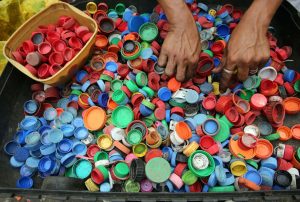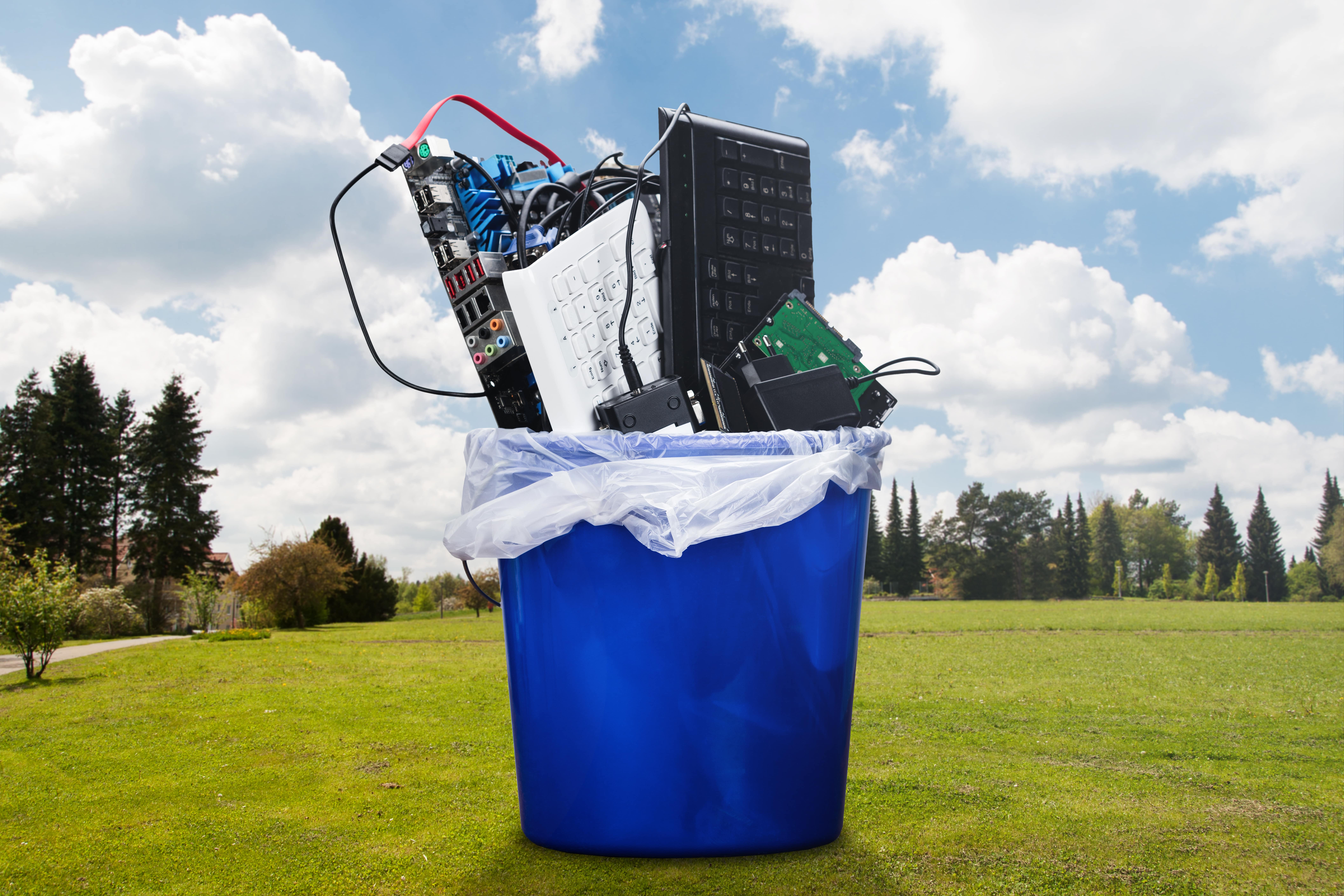It’s been estimated that around the world, people generated 44.7 million metric tons of electronic waste in 2016, with the U.S. alone responsible for 6.3 million tons, or 14 percent of the world’s total. Which is why, now more than ever, it’s important that there are new ways of e-waste and plastic disposal.
Those are scary numbers because electronic waste has two key components. One is toxins, which when placed in community landfills can pose environmental threats to the soil and water there.
That’s a key reason why there’s such a strong push today to recycle e-waste, so it doesn’t create significant long term environmental and health problems. But we know that e-waste also contains valuable reusable materials, which when removed from these devices can be used to make new products. Those reusable materials include precious metals, gold, platinum, copper wiring – and plastics.
E-waste removal isn’t that difficult once you set up a strategy. Proper recycling of these materials helps ensure they won’t end up polluting our air, soil and waterways.
The process for recycling electronics is in some ways still in transition, with innovations holding out the potential to reduce recycling costs, make the process more efficient, and ensure that recycling is a tool worth investing in.
The latest innovation in the field of electronics recycling comes from researchers at the Illinois Sustainable Technology Center, who developed a method for the sustainable recycling of the plastics found in electronic products. The team created a non-toxic solvent that can recover polycarbonate, a group of thermoplastic polymers, from the plastics. This is expected to help provide a nontoxic way to recover all plastics when e-waste is being recycled.
Best of all, the new solvent is environmentally friendly as well.
E-waste Removal: What New Methods Did the Researchers Discover?
We know that e-waste increases in volume every year, placing a major burden on our community landfills.
But one challenge the recycling industry has confronted is that while some parts inside electronics, such as glass or metals, are readily recyclable, another key ingredient, plastics, pose a bigger challenge.
That’s because the plastics used in electronics have a different polymer composition than recyclable items like soda bottles or milk jugs, which are made from single polymers. Plastics in cellphone cases, for example, are made from a more complex polymer blend, and there are fewer safe or efficient ways to recycle them.
Until now, that is.
Scientists at the Illinois Sustainable Technology Center discovered a way to separate mixed polymers, so they can get recycled and used to make new products. Their focus was on the mixed-plastics in electronics waste, and how that could be a valuable source of reusable polymers.
What they discovered was an energy-efficient chemical solvent that could recover polymers from complex plastic blends, in a nontoxic and nondestructive way. The process involves using the solvent to dissolve industrial polymers so the plastic polymers can be recovered.
The goal of the study was to find ways to recycle the abundant amount of mixed-plastic waste in electronics, so those plastics could be reused, and so the process of removing them is environmentally safe and healthy.
Researchers also found that if there was any residual polymer waste left over, it could be converted into fuel oil by a thermochemical process called pyrolysis, or the thermochemical decomposition of organic material at elevated temperatures. That means all the plastics in e-waste can be successfully recovered.
What Are the Environmental Benefits?

At the start of this successful research project, the scientists want to find environmentally sustainable and energy efficient ways to recover materials that still have value in e-waste, including plastics. Doing so means these materials will not end up in landfills.
They believe the results will contribute to the development of a commercial and sustainable process to more effectively recycle e-waste plastics. And that helps cut down on environmental pollution that can be caused by those very plastics.
This could become a very significant environmental contribution. Plastics are literally everywhere, used in diverse products, and it’s been estimated that 8 million metric tons of plastic waste enter the oceans each year.
Trash containing plastics are also known to pollute the land as well.
We’ve known for a long time that e-waste doesn’t belong in our landfills because of the toxic chemicals within them. Now, having a newly advanced technology that can successfully remove all plastics inside e-waste is another significant boost to recycling programs.
Currently, there are no federal laws that govern the disposal of electronic waste, although 25 states have passed legislation to promote and help facilitate e-waste recycling.
And, of course, consumers can contribute on their own by recycling any electronic devices that they own and no longer want.
While the easiest way to produce less e-waste is to buy fewer electronics, we know that tech products are becoming obsolete more quickly these days as manufacturers continue to develop new models with advanced features.
So if you’re like millions of other consumers around the world who want those latest models, remember to get rid of your older devices not by throwing them out but by recycling them.
E-Waste and Plastic Disposal: This Can Help the Environment
E-waste makes up 70 percent of the toxic waste being generated today, and these devices contain toxins like lead, mercury, arsenic, cadmium, selenium, chromium, and flame retardants.
With so many new computers, laptops and cell phones being manufactured every year, there’s a strong need to promote recycling to reduce environmental risks. And today, scientific research is creating new, more innovative ways to recycle electronics, which helps to make it a stronger option for coping with e-waste in the future.
In the meantime, we all have a role to play by recycling all unwanted electronics. Instead of tossing out those products, or letting them sit in a desk, bring them to a top electronic recycler like Great Lakes Electronics, where your devices can be disassembled, and the individual parts can be used to help make new products.
Great Lakes Electronics Corporation has years of experience performing environmentally friendly recycling of all electronic products. Their team will disassemble each item into component parts, and the ones that still have value can be sold for reuse. Other parts can be used for metals recovery, and everything is recycled.
In addition, once your material arrives at one of the Great Lakes facilities, it will be inventoried, and all company identification or sensitive information will be removed and destroyed. A Certificate of Recycling will be issued for each shipment.
To learn more, call 888-392-7831 to request a quote.

